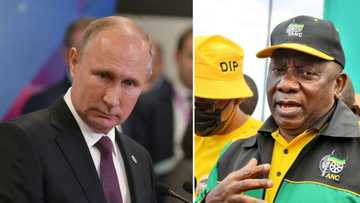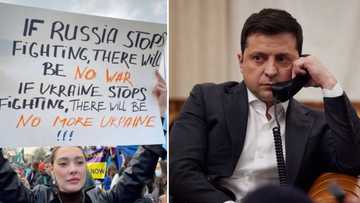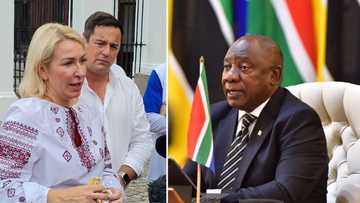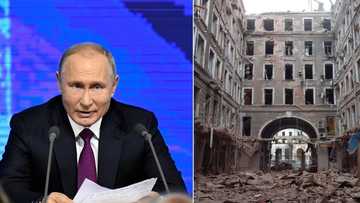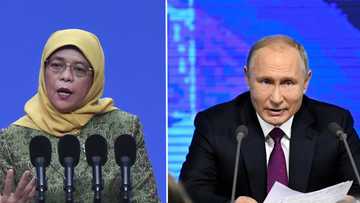Russia Vs Ukraine: Historic Events That Led to Violent Invasion by Putin
The world was shocked when Russia invaded Ukraine on 24 February, 2022. The hashtag #PrayForUkraine started as people across the globe finally took notice of an issue that has been ongoing for several years. Photos of burning buildings, crying mothers and destroyed hospitals flooded our timelines.
PAY ATTENTION: Click “See First” under the “Following” tab to see Briefly News on your News Feed!
The Russian invasion of Ukraine proved how little people knew about the tensions between different countries. The attack on the Ukrainian people wasn’t a spur-of-the-moment kind of thing, it was a calculated attack by Vladimir Putin that marked the breaking point of a war that started in 2014.
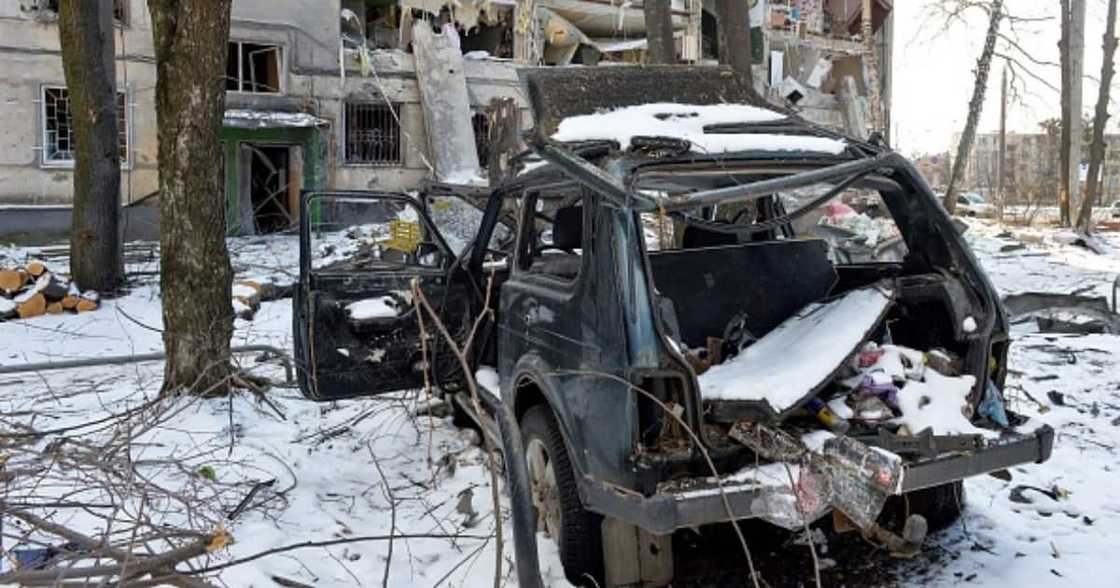
Source: Getty Images
Briefly News takes a more detailed look at the historical events leading up to Russia invading Ukraine.
Ukraine gains independence in 1918
In 1917, the Russian monarchy collapsed due to a divided government and the strain of war. The event led to a group of patriotic Ukrainians establishing the Central Rada body, a revolutionary parliament, according to History Extra.
PAY ATTENTION: Never miss breaking news – join Briefly News' Telegram channel!
The Russian Provisional Government gave the go-ahead to establish complete the Ukrainian People's Republic (UNR). The decision was not supported by the Bolsheviks, who subsequently tried to invade Ukraine and make it part of the Soviet State.
In January 1918, UNR declared full independence and signed a peace treaty with the Brest and the Bolsheviks.
The Russian Civil War marked the end of UNR, but in 1922, the Bolsheviks were forced to create the Soviet Ukrainian Republic, which became a founding member of the Soviet Union. The peace was short-lived before Stalin renewed attempts to crush the Ukrainian nation during the early 1930s.
According to History Extra, more than four million Ukrainians died between 1932 and 1933 during what is known as Holodomor - meaning "murder through starvation". It was considered genocide worldwide, however, Russia rejects the notion to this day.
The enlarged Ukrainian Soviet Socialist Republic was formed in 1945, and it gained nearly all the ethnic Ukrainian territories during the rule of Nikita Khrushchev.
The collapse of the Soviet Union
Former late Russian President Boris Yeltsin and his administration were more focused on building an independent Russia than nurturing the Soviet Union. Yeltsin and then Ukrainian President Leonid Kravchuk formed an alliance based on their mutual rejection of the Soviet legacy.
Russia, Ukraine and Belarus initiated the formal dissolution of the Soviet Union following the Ukrainian referendum in December 1991. The move came with criticism from Russian figures, and it soon led to the questioning of the transfer of Crimea, which happened in 1954.
In 1997, the integrity of Ukrainian borders was affirmed by a comprehensive treaty between Russia and Ukraine. The borders were also guaranteed in the Budapest Memorandum of 1994, after Ukraine surrendered its nuclear arsenal. However, the treaty expired on 31 March, 2019.
Russia fights Ukrainian NATO membership in 2008
NATO discussed the possibility of extending membership to Ukraine in April 2008. However, the idea was vehemently opposed by Vladimir Putin, who allegedly at one point told then-US President George W. Bush that Ukraine is “not even a real nation-state, according to US News. NATO did not give Ukraine a Membership Action Plan (MAP).
2014 Ukrainian revolution and Annexation of Crimea
In 2014, protests saw pro-Russia president Yanukovych being overthrown in Ukraine. He ultimately fled to Russia, and a new government vowed to orient Ukraine toward the European Union. The event was dubbed the "2014 Ukrainian revolution". The revolution was met with Russia invading and taking control of Crimea.
The annexation of Crimea was criticised by the European Union and the United Nations. It has been described as the beginning of an ongoing war between Russia and Ukraine, which led to the devastating invasion in 2022.
The 2022 Russian invasion of Ukraine
For the past several months, concerns were raised over the increasing numbers of Russian troops along the borders of Ukraine. By December 2021, tens of thousands of Russian troops were deployed as Putin pressed for reassurance that Ukraine will never be given NATO membership. Biden's administration refused to meet Putin's demands.
On 24 February, Russian forces launched an attack on Ukraine on orders from President Vladimir Putin.
Putin claimed the ”demilitarisation of Ukraine“ was done due to what he described as a “hostile anti-Russia being created on its historic lands.“
After gaining independence, Ukraine started rebuilding and has been getting stronger ever since - something Putin was not a fan of because, to him, it threatens the security of his country.
The Daily Maverick’s Jars Balan wrote:
”If Ukrainians succeeded in fully reforming their country along lines of other Western democracies, it would set a bad precedent for former Soviet countries and serve as an example for Russians who want a more democratic country.”
The real reason Putin invaded Ukraine: Power
Putin has been accused of wanting to overthrow Ukraine’s democratic government and to replace it with a pro-Kremlin puppet, BBC reported. Putin, however, denies this.
His demands seconds this. In order to stop the war, Putin wants Ukraine to change its constitution, guaranteeing it will never join the EU or NATO. He also wants Ukraine to recognise Crimea as part of Russia.
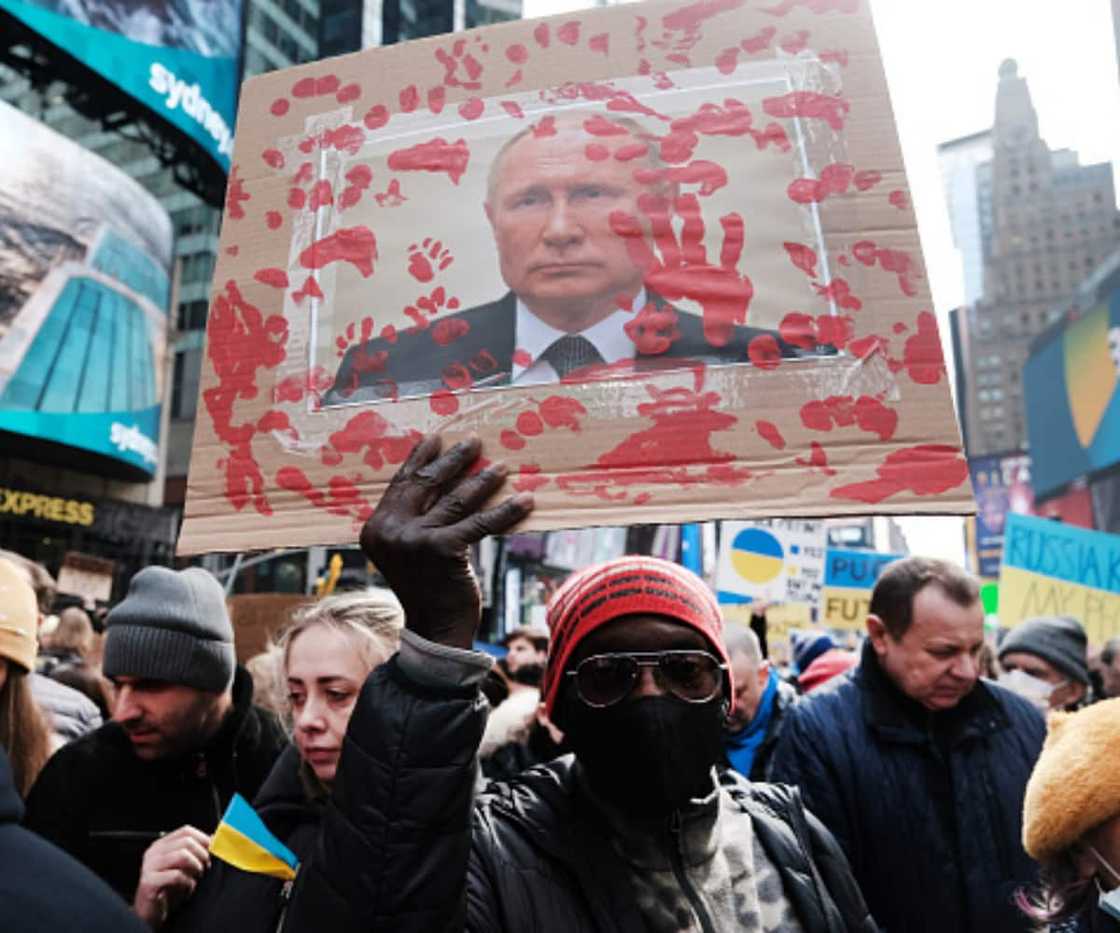
Source: Getty Images
Ukraine pushes back
The war is a result of Russia’s continuous attempts to control Ukraine. Putin might have blindsided the world with his sudden attack, but the resistance he is getting from Ukraine is far beyond what he expected.
The Ukrainian people’s strength and resilience shows how much the country has grown since its independence after the fall of the Soviet Union.
Source: Briefly News

